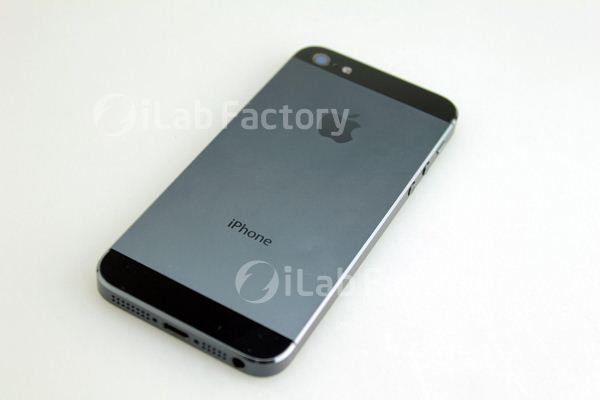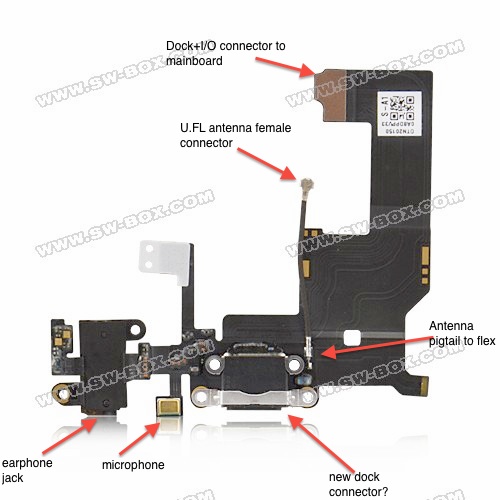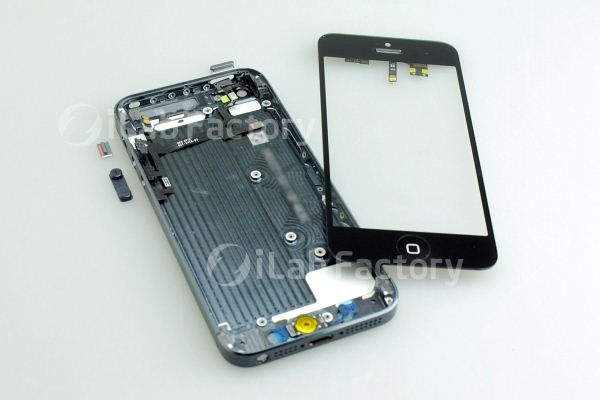Preparing for the iPhone Next: Rumors Analyzed
by Brian Klug & Anand Lal Shimpi on August 27, 2012 9:40 PM EST- Posted in
- Smartphones
- Apple
- Mobile
- iPhone
While we typically don't comment on rumors we don't know to be true at AnandTech, we often get requests to help set rational expectations ahead of major iDevice launches. The shroud of secrecy around major Apple launches can pave the way for both sensible and unrealistic conclusions.
Given the growth of Apple's iPhone/iPad devices, it has become increasingly difficult for suppliers in the chain to remain mum about any changes. Similar to how we often get early access to CPUs, motherboards and other components out of Taiwan, it has become increasingly commonplace to see leaks of iDevice components out of the big ODMs in China.
Apple is largely expected to launch its sixth iPhone next month. The historical cadence of design, SoC, and cellular changes are in the table below:
| Apple iPhone - Historical Trends | |||||||
| Release Year | Industrial Design | CPU Architecture | GPU Architecture | Cellular Architecture | |||
| iPhone | 2007 | 1st gen | ARM11 | MBX-lite | Infineon S-Gold 2 | ||
| iPhone 3G | 2008 | 2nd gen | ARM11 | MBX-lite | Infineon X-Gold 608 | ||
| iPhone 3GS | 2009 | 2nd gen | Cortex A8 | SGX-535 | Infineon X-Gold 608 | ||
| iPhone 4 | 2010 | 3rd gen | Cortex A8 | SGX-535 | Infineon X-Gold 618 in 4 GSM / Qualcomm MDM6600 in 4 CDMA | ||
| iPhone 4S | 2011 | 3rd gen | 2 x Cortex A9 | SGX-543MP2 | Qualcomm MDM6610 (MDM6600 w/ ext. trans) | ||
| iPhone Next | 2012 | ? | ? | ? | ? | ||
Trends are pretty easy to spot in the table. With the exception of the first iPhone, the industrial design appears to be on a 2-year cadence. The CPU and GPU architectures are also on the same 2-year cadence. From a silicon standpoint even the cellular architecture is trending towards the same 2-year cadence, with a few notable exceptions (e.g. GSM/CDMA iPhone 4 divide).
Based on historical trends alone it's pretty easy to conclude that we'll see a 4th generation chassis, a pair of ARM Cortex A9s and a PowerVR SGX 543MP2 under the hood. Add the assumption of LTE (a reasonable one to make) and you have a pretty believable story. It turns out the currently available evidence helps corroborate this, but let's dig through what's out there to see how this all fits.
Chassis & Display
The chassis is largely a known quantity by this point. Enough examples out of China have surfaced to support the current working theory of a 4-inch diagonal (16:9) display in a slightly taller chassis with roughly the same width. Put simply, it's a new taller aspect ratio, which also has the consequence of including a larger 4-inch, 640 x 1136 display. The result is a change only in one dimension for developers to worry about.
The other big rumored change is a move from on-cell touch sensing (which places the drive and detect ITO layers above the LCD assembly) to an in-cell touch solution. In-cell being the operative word because the drive layers are integrated into the LCD gating (or use it natively), or on the color filter layer. There's some debate about what counts as on-cell and in-cell that isn't quite settled, but ultimately what it boils down to is a thinner display stack that will contribute significantly to the reduction in overall device thickness that is rumored for the upcoming iPhone.
While the industrial design remains quite similar at a high level, there do appear to be some major changes. Where the 4 and 4S designs used front and back glass with an external metal band for support, the leaked designs out of China feature a metal unibody construction with cutouts for RF windows at top and bottom. There's enough evidence of this from the CNC machine marks visible on examples, and moreover moving to a larger form factor requires a beefier chassis.

Black regions at top and bottom are likely RF window cutouts
With top and bottom RF windows (which appear to be glass) there shouldn't be any implications on antenna performance for cellular. If you followed our coverage of the evolution of Apple's cellular antenna design from the iPhone 4 GSM, to 4 CDMA, to 4S, you'll notice that this is a clear next step, largely inheriting the top/bottom antenna split from the 4S which fully mitigated deathgrip. Interestingly enough the exterior band appears to have a different chrome finish rather than the matte stainless steel of previous designs.

Bottom flex cable, annotations ours
Other things like moving the 3.5mm headphone jack to the bottom of the device and the mini 9-pin dock connector are fairly well corroborated by leaks with components that all fit together inside the case. Interestingly enough, parts indicating the mini dock connector and relocated headphone jack have been circulating for nearly 4 months.











131 Comments
View All Comments
alxx - Tuesday, August 28, 2012 - link
or buy it to replace iphone 4 with starting to fade batteriesplext0r - Tuesday, August 28, 2012 - link
That's my dilemma. IPhone "Next" or SGS3. :) I currently have the iPhone 4.ltcommanderdata - Tuesday, August 28, 2012 - link
Hopefully Apple adopts a wide gamut IPS screen for the next gen iPhone as they've done for the 2012 iPad.It's too bad Apple's Q3 iPhone release schedule leaves them at an awkward time at the tail end of this silicon generation. Sticking to a 32nm A5, a 50% clock speed bump over the iPhone 4S to 1.2GHz seems reasonable and would be well positioned at launch. However, competition will come very quickly with Cortex A15 based CPUs and OpenGL ES 3.0 capable GPUs in Q4 and Q1 2013.
alxx - Tuesday, August 28, 2012 - link
In A15 chips are up to speed and ready in time.Has any A15 based chip been public-ally demoed over 1GHz yet ?
leomax999 - Tuesday, August 28, 2012 - link
Exynos 5250 in disguise at SIGGRAPH.krumme - Tuesday, August 28, 2012 - link
Iphone buyers dont buy specsExcept when Apple tells them to do
Therefore Apple can be as conservative and innovative as is needed in the market situation. No other company have that luxury.
Tegeril - Tuesday, August 28, 2012 - link
Sigh.doobydoo - Thursday, September 6, 2012 - link
The only reason iPhone buyers don't buy specs is that specs have never been an issue for iPhone users.That is to say, the software and apps have always run flawlessly on iOS.
The same can't be said for Android.
As for why this is the case? Look no further than the tight integration between hardware and software combined with, for example, the fact that the iPhone 4S has the fastest GPU in any smartphone in America.
rupaniii - Tuesday, August 28, 2012 - link
I'm guessing Power teaked version of the A15 core in Dual configuration, along with the top of the line PowerVR in Dual GPU configuration. It's got to be a world beater. Definitely worldwide LTE locked at carrier level.If not, Snapdragon S4Pro will own it.
A5 - Tuesday, August 28, 2012 - link
None of those designs (A15 or PowerVR 6-series) are ready yet. Apple has never been one to fight the spec war, and I don't see any of that changing now.